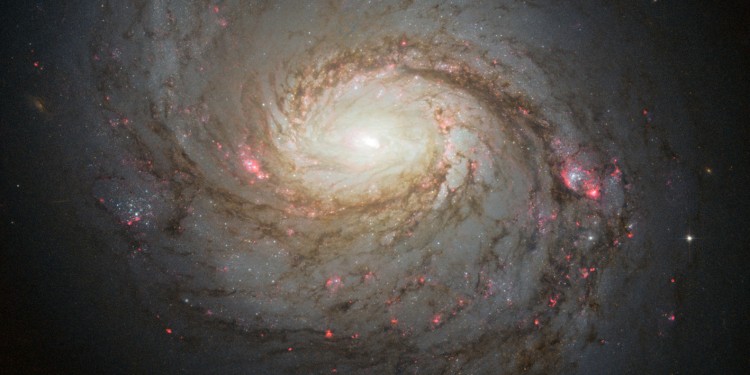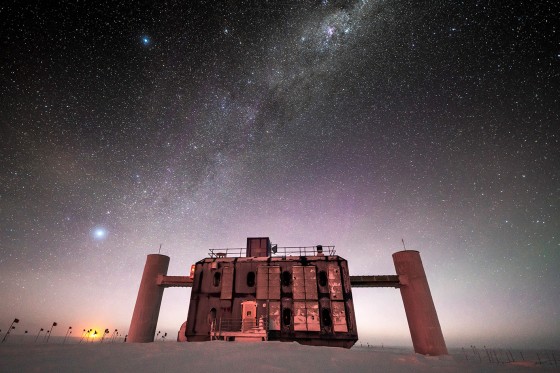
Neutrinos give the first insight into the interior of an active galaxy
Using the neutrino detector “IceCube”, an international team of researchers has for the first time found indications of high-energy neutrinos originating from an active galaxy in the Cetus (‘whale’) constellation. This galaxy is designated as Messier 77 (also known as NGC 1068) and is altogether one of the best studied galaxies. It is approximately 47 million light years away from the Earth and can be observed by means of strong binoculars. Messier 77 was discovered in 1780. The term “active” galaxy refers to the galaxy’s nucleus, which contains a black hole that accumulates an especially large amount of mass, making the galaxy shine extremely brightly. “In demonstrating the existence of the neutrinos, the ‘IceCube’ team gained insights into the interior of an active galaxy for the first time,” says Prof. Alexander Kappes, underlining the importance of the study published in the “Science” journal. “What is interesting is that the observations point to a class of high-energy objects in the universe which high-energy photons (gamma rays) find it difficult to escape from. Future detectors with even higher sensitivity such as the ‘IceCube Gen2 Observatory’ will be able to detect a whole lot more of these sources,” Kappes explains.

Original publication
IceCube Collaboration: Evidence for neutrino emission from the nearby active galaxy NGC 1068; Science (3 Nov 2022),Vol 378, Issue 6619, pp. 538-543; DOI: 10.1126/science.abg3395
